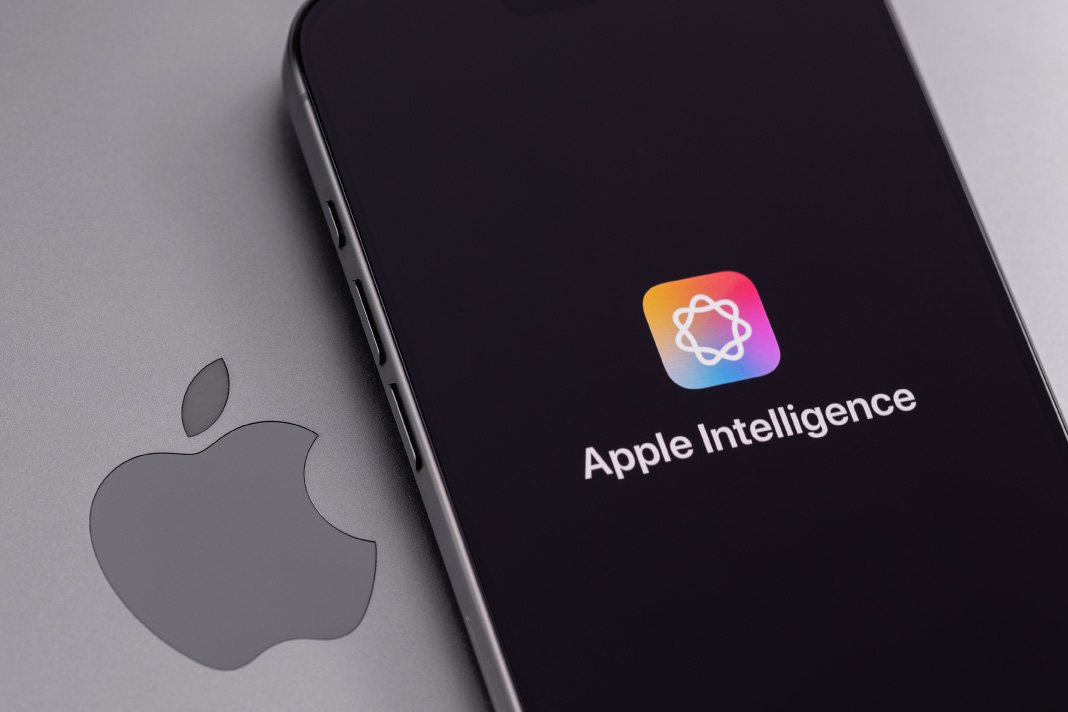Apple forms a secret “Answers” team to create a stripped-down ChatGPT rival while losing top AI talent to Meta and testing the iPhone 17 Pro in the wild.
Apple has a new “Answers” team developing a stripped-down rival to ChatGPT to help users access world knowledge. Also: An iPhone 17 Pro is spotted in San Francisco, and Apple loses its fourth AI researcher in a month to Meta. Lastly, more on Apple’s latest executive changes.
Last time in Power On: The first foldable iPhone will arrive next year in un-Apple-like fashion.
The Starters
When Apple Inc. introduced its artificial intelligence platform last year, it made one thing clear: There wouldn’t be a homegrown chatbot. Instead, the company teamed up with OpenAI to integrate ChatGPT into the Siri voice assistant, letting users access what it calls “world knowledge” without building a product in-house.
Since then, Apple’s top software and marketing executives have dismissed the need for a chatbot, arguing that consumer interest is limited. They’ve also pushed back against the notion that this missing element shows Apple is falling behind in artificial intelligence. Internally, some leaders in the company’s AI group have even expressed skepticism about ChatGPT-style tools altogether.
But the reality is, products like ChatGPT are widely beloved and deeply useful — serving hundreds of millions globally. Some rely on the tools for math, spreadsheets and brainstorming ideas. Others use the technology for something even simpler: search.
Right now, Apple Intelligence doesn’t offer search capabilities. The system focuses on summarizing notifications, rewriting text, generating Genmoji images and cleaning up photos. Soon, it will also be able to translate messages and calls. But it lacks anything resembling the conversational, AI-powered search experiences available from ChatGPT or Google’s Gemini.
Meanwhile, Siri remains frustratingly inconsistent at answering questions. Sure, it can handle some basic queries. But it often has to hand off other request to ChatGPT — and only through a stripped-down interface. Too often, it simply punts users to a generic Google web search, which is even more irksome when you’re using a screen-less device like the HomePod.
That puts Apple in a vulnerable position. The company has never developed its own search engine — in part because Google search is better, but also because Alphabet Inc. pays Apple roughly $20 billion a year to remain the default option on its devices.
But that arrangement may soon be disrupted. The US Justice Department is widely expected to force changes to the search deal, potentially costing Apple billions annually. On last week’s earnings call, Apple’s finance chief signaled that the company’s services growth is closely tied to the Google pact.
At the same time, the search landscape is changing fast. Thanks to generative AI, the market has become more democratized. People are turning to tools like ChatGPT in ways that go far beyond traditional queries. Apple’s own head of services, Eddy Cue, even testified in court that AI-based search is the future. He confirmed that Apple is exploring partnerships with startup Perplexity to move toward a more modern search experience.
Despite philosophical reservations among some Apple leaders, the company is clearly heading in that direction. Earlier this year, Apple quietly formed a new team called Answers, Knowledge and Information, or AKI. This group, I’m told, is exploring a number of in-house AI services with the goal of creating a new ChatGPT-like search experience.
The AKI team is led by Robby Walker, a senior director reporting to AI chief John Giannandrea. Walker previously oversaw Siri but lost control of it after engineering delays. Following that shake-up, he was assigned the new Answers initiative, and has brought along several key team members from his Siri days.
While still in early stages, the team is building what it calls an “answer engine” — a system capable of crawling the web to respond to general-knowledge questions. A standalone app is currently under exploration, alongside new back-end infrastructure meant to power search capabilities in future versions of Siri, Spotlight and Safari.
Apple has recently begun advertising job openings for the team on its careers site, stating: “Our work fuels intuitive information experiences across some of Apple’s most iconic products, including Siri, Spotlight, Safari, Messages, Lookup, and more. Join us in shaping the future of how the world connects with information!”
Several listings specifically mention experience with search algorithms and engine development. A finished product may still be far off, but the direction is now unmistakable: Something akin to a stripped-down, Apple-built approach to ChatGPT-like search is coming.
The Bench
A likely iPhone 17 Pro is spotted in San Francisco. For 15 years, Apple employees have been secretly testing unreleased iPhones in the wild. This is a necessity: There is no real way to rigorously test an iPhone’s cellular capabilities, camera enhancements and other features in a controlled environment within Apple’s labs or inside the homes of employees. In fact, given the stakes of launching a new iPhone globally, it would be irresponsible to not put the new models through their paces in the same places that customers will use them.
That brings us to this past week, when what is likely an iPhone 17 Pro was spotted by an X user in San Francisco. The device — visible in the image on the left — is in a stealth case meant to disguise the look of the phone (similar to how unreleased cars are road tested in camouflage). Since the revelation, there have been questions over whether the Apple team member testing the device will be disciplined for being part of a leak. Let me be clear on that: The testing process seen in the images went as intended, and the employee — and Apple — were just unlucky.
There are hundreds of iPhone 17s being actively used around the world right now in stealth cases. It just so happens that a public member knew exactly what they were looking at and that the iPhone design is different enough (see the relocated lidar and LED flash) to be noticeable. Many of you reading this may have seen unreleased Apple devices in the wild without ever realizing it.
Apple’s foundation models team continues losing talent to Meta. The group tasked with developing Apple’s large language models — the key technology behind generative AI — is in turmoil. The team has been blamed internally for Apple Intelligence’s struggles, and the company is now exploring the idea of using third-party models for Siri. At the same time, Apple’s Silicon Valley peers are poaching talent and offering sky-high compensation packages.
That’s all added up to an exodus for the group, known as Apple Foundation Models. In just the last month, four key members have hit the exits for Meta’s new superintelligence lab, which is paying them several times what they were making at Apple. Meta also has promised the ability to work on much more effective technology.
It started off in early July with Meta poaching the team’s creator, Ruoming Pang. The Facebook owner then snapped up Tom Gunter and Mark Lee, two early members of the group. Now, as I reported this past week, Bowen Zhang is joining them. He led multimodel development at Apple, overseeing systems that draw information from various sources.
Roster Changes
Jeff Williams becomes the latest visitor to ‘Hotel Cupertino.’ When Apple announced that longtime Chief Operating Officer Jeff Williams would be retiring at the end of the year, there was little surprise. I had been telegraphing for months that a leadership overhaul was looming — and noted a year ago that Williams’ successor would be deputy Sabih Khan. This past week, the company put the transition into motion, with Khan becoming COO and Williams becoming a senior vice president overseeing design, the Apple Watch and health.
The first thing to know is that Williams and Khan have essentially been in these “new” roles for years. Khan was already running operations, and Williams spent much of his time on design, the development of the Apple Watch and the company’s health care efforts. Second, Apple is following its tried-and-true Hotel Cupertino strategy, where retiring executives stick around for a while after they’ve stepped down from their main roles: “You can check out anytime you like, but you can never leave.”
Apple has done this with executives like Bob Mansfield, Jony Ive and Dan Riccio — and it’s now playing out with former Chief Financial Officer Luca Maestri and ex-marketing head Phil Schiller as well.
But there are some differences this time around with Williams:
- He has been named to a brand new SVP role that will ostensibly only exist until December, when Williams attempts to retire for good. That’s a short stint for an entirely new role. Maestri has remained a vice president — at least on paper — for eight months, while Schiller has already been in his reduced Apple fellow role — running the App Store and events — for half a decade.
- The other notable item here is that Williams is remaining on Apple’s executive team (which doesn’t include vice presidents) until retirement. That gives him a more high-profile final role compared with most of Hotel Cupertino’s other current and prior members.
A couple other odds and ends on this topic:
- As I expected, Khan has indeed taken on responsibility for the Greater China team led by Isabel Ge Mahe and its AppleCare group.
- I still expect the Apple Watch and health software teams to be given to Craig Federighi (the hardware team already reports to John Ternus). And Apple has previously indicated the design teams will be consolidated under Chief Executive Officer Tim Cook.
One final thought: The Williams and Maestri transitions are just the start of a larger management shake-up. In a few years’ time, there are likely to be a bunch of fresh faces running the company — even if Cook is still at the top. You can read all the details about that here.



